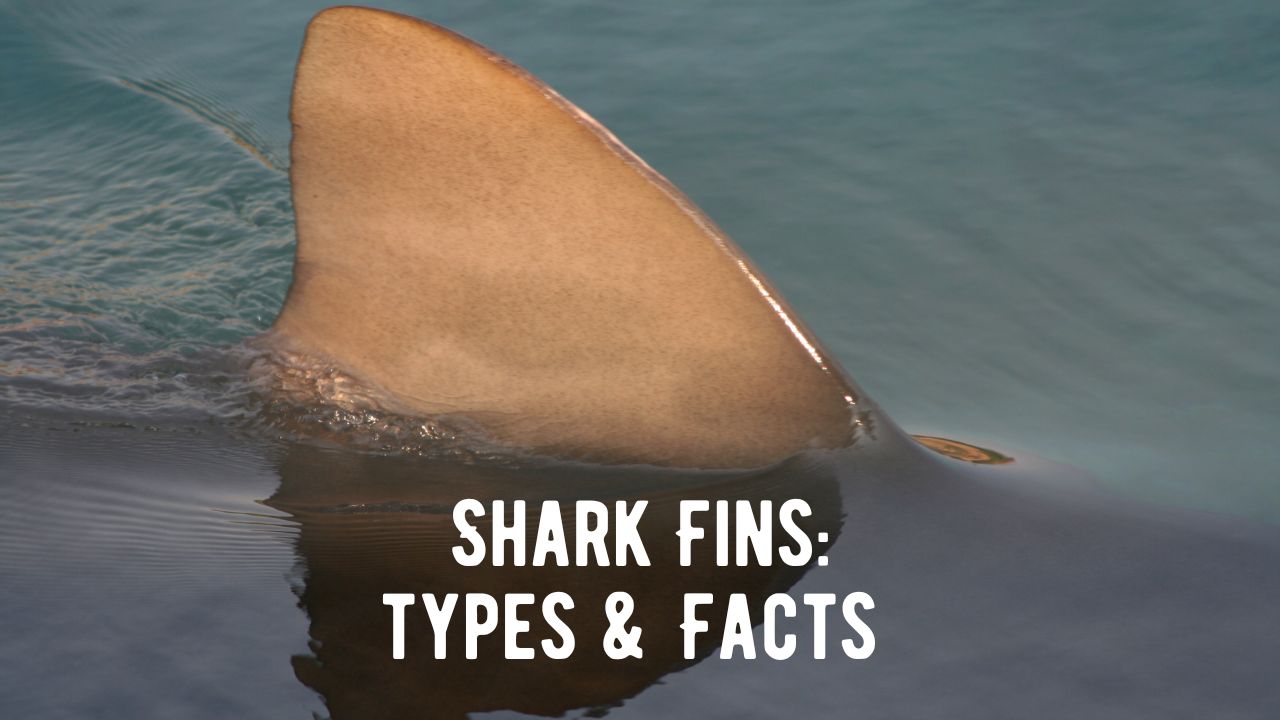
How Many Fins Do Sharks Have? Sharks, the majestic rulers of the ocean, are equipped with an array of fins that contribute to their unparalleled agility, buoyancy, and predatory prowess. In this comprehensive article, we delve into the fascinating realm of shark fins, exploring their types, functions, and the crucial role they play in the life of these extraordinary creatures.
What Are Shark Fins Made Of?
Shark fins are primarily composed of cartilage, a flexible and durable connective tissue. Unlike bony fish that have fins made of bone, sharks belong to the class Chondrichthyes, characterized by skeletons primarily composed of cartilage. This cartilaginous structure grants the fins both strength and flexibility, crucial for a shark’s survival in the aquatic realm.
The Anatomy of Shark Fins:
1. Pectoral Fins:
- Number: Two pairs (one on each side).
- Location: Found on either side, behind the shark’s head.
- Function: Pectoral fins provide lift and stabilization. They are crucial for steering, allowing sharks to control their direction with precision. In some species, these fins can be large and distinctly shaped, contributing to the shark’s unique profile.
2. Pelvic Fins:
- Number: One pair.
- Location: Positioned on the shark’s ventral side, behind the pectoral fins.
- Function: Pelvic fins assist in balance and stability. They play a role in the shark’s ability to make sharp turns and maintain control during rapid movements.
3. Dorsal Fins:
- Number: One or two, depending on the species.
- Location: Found along the shark’s back.
- Function: Dorsal fins serve multiple purposes. They contribute to stability by preventing rolling, and in some species, the first dorsal fin may act as a hydrofoil, aiding in lift. The second dorsal fin is more common in certain shark families and varies in size and shape.
4. Anal Fin:
- Number: One.
- Location: Located on the shark’s ventral side near the tail.
- Function: The anal fin plays a role in preventing rolling and provides additional stability. It complements the dorsal fins in maintaining the shark’s equilibrium.
5. Caudal Fin:
- Number: One.
- Location: Positioned at the end of the shark’s tail.
- Function: The caudal fin, also known as the tail fin, is a powerhouse for propulsion. Its shape varies among species, influencing a shark’s swimming style. Thresher sharks, for example, have an elongated upper lobe for powerful strokes, while others may have a more symmetrical shape for speed and agility.
Variations in Fin Arrangements:
1. Heterocercal Tails:
- Some sharks, like those belonging to the order Chondrichthyes, have heterocercal tails. These tails feature an upper lobe that is larger and longer than the lower lobe, providing lift and stability.
2. Homocercal Tails:
- Bony fish typically have homocercal tails, where the upper and lower lobes are of equal size. Sharks with this tail type often exhibit greater speed and maneuverability.
3. Dorsal Fin Variations:
- Dorsal fins can vary in size and shape. Some sharks, like the great white shark, have prominent triangular dorsal fins, while others, like the nurse shark, feature smaller, more rounded dorsals.
Adaptations for Survival:
Shark fins are not merely aesthetic features; they are finely tuned adaptations that have evolved over millions of years to optimize a shark’s performance in its environment. From the sleek hydrodynamics of the caudal fin to the precision steering enabled by pectoral fins, each component contributes to a shark’s survival instincts and hunting strategies.
A Compilation of Shark Fin Facts
1. Composition and Structure:
- Cartilage, Not Bone: Shark fins are primarily composed of cartilage, the same material that makes up a shark’s skeleton. This cartilaginous composition provides flexibility and durability, contributing to the fins’ effectiveness in various functions.
2. Types of Fins:
- Diverse Array: Sharks possess several types of fins, each serving a specific purpose. These include pectoral fins for lift and steering, pelvic fins for balance, dorsal fins for stability, anal fins for additional equilibrium, and the caudal fin (tail fin) for propulsion.
3. Functions in Movement:
- Hydrodynamic Efficiency: The streamlined design of shark fins enhances the hydrodynamics of their movement through water. Fins reduce drag, allowing sharks to navigate with precision and efficiency, whether cruising through open oceans or maneuvering in intricate reef environments.
4. Role in Hunting:
- Precision Steering: Pectoral fins, located on either side of a shark, play a crucial role in steering and maintaining balance during sharp turns. This precision is essential for hunting, allowing sharks to navigate complex underwater terrain and pursue prey with agility.
5. Unique Fin Shapes:
- Species-specific Characteristics: Different shark species exhibit unique fin shapes. For example, the great white shark is known for its prominent triangular dorsal fin, while the hammerhead shark boasts a distinctive, hammer-shaped head with extended lateral fins.
6. Conservation Challenges:
- Overfishing and Finning: The demand for shark fins, driven by cultural practices such as shark fin soup, has led to overfishing and a controversial practice known as finning. Finning involves removing a shark’s fins and discarding the rest of the live shark, posing significant threats to shark populations.
7. Environmental Impact:
- Ecosystem Balance: Sharks, as apex predators, play a crucial role in maintaining the balance of marine ecosystems. The decline in shark populations due to overfishing can have cascading effects, impacting the abundance of other marine species and the overall health of oceans.
8. Ethical Considerations:
- Cultural Practices: While shark fin soup holds cultural significance in some regions, ethical concerns surround the practice of harvesting shark fins. Conservation efforts aim to address these concerns and promote sustainable alternatives.
9. Global Conservation Initiatives:
- CITES Listings: Some shark species are listed under the Convention on International Trade in Endangered Species of Wild Fauna and Flora (CITES), highlighting the need for international cooperation in regulating and monitoring the trade of shark fins.
10. Advocacy for Responsible Practices:
- Shark Conservation Movements: Organizations and activists worldwide advocate for responsible fishing practices, sustainable seafood choices, and the protection of sharks. Awareness campaigns aim to shift perspectives and promote a harmonious coexistence with these oceanic wonders.
Conclusion:
In the symphony of the ocean, shark fins are the virtuoso instruments that enable these remarkable creatures to navigate, hunt, and thrive. Understanding the intricacies of shark fin anatomy not only deepens our appreciation for these ancient predators but also underscores the importance of their conservation. As stewards of the seas, it is our responsibility to safeguard the habitats and ecosystems that sustain these finned marvels, ensuring a harmonious coexistence between sharks and the vast blue expanse they call home.
Q1: Is Shark Fin Made of Cartilage or Bone?
Shark fins are primarily composed of cartilage, not bone. The cartilaginous structure provides flexibility and strength, essential for the fins’ diverse functions.
Q2: Is Shark Fin Harmful?
The harvesting of shark fins, often through the practice of finning, poses a significant threat to shark populations and marine ecosystems. Shark finning involves removing fins and discarding the rest of the live shark, leading to conservation issues.
Q3: Do Sharks Have Fins or Scales?
Sharks have fins, not scales. Fins are vital anatomical features that aid in a shark’s movement, balance, and steering, while scales are absent in most shark species.
Lack of Fins: Q4: What If Sharks Lack Fins?
If sharks were devoid of fins, they would face significant challenges in mobility, stability, and hunting. Fins play a pivotal role in a shark’s survival and are integral to its existence in its aquatic environment.
Q5: Why Are Shark Fins So Valuable?
Shark fins are, unfortunately, highly valued in certain cultures for their use in shark fin soup. The demand for shark fins has led to overfishing and a decline in shark populations, posing a threat to marine ecosystems.
Q6: What Is Shark Fin Good For?
Shark fins are traditionally used to prepare shark fin soup, a delicacy in some cultures. However, the consumption of shark fins has raised ethical and environmental concerns due to its impact on shark populations.






